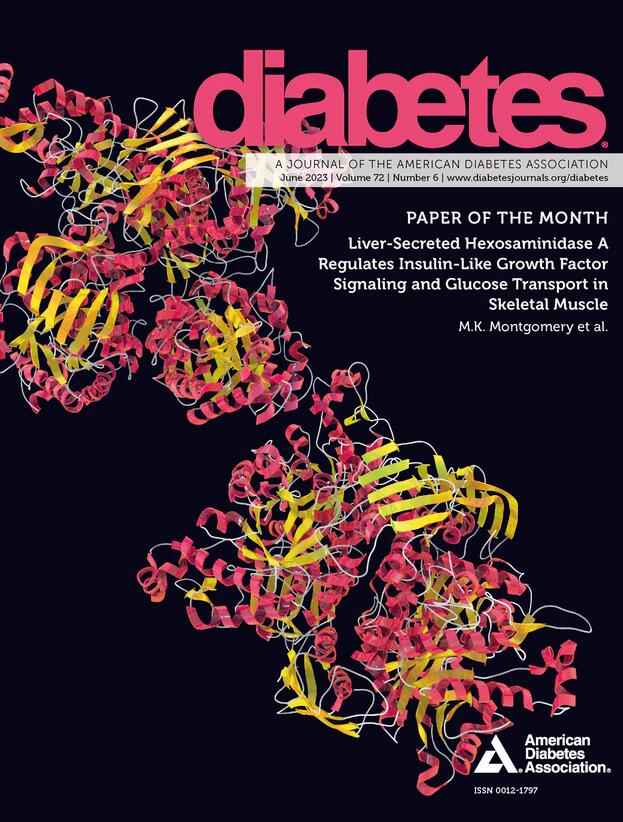Closing the Gap Between Vision and Victory in Type 1 Diabetes: The NIDDK Human Islet Research Network (HIRN) Initiative
IF 6.2
1区 医学
Q1 ENDOCRINOLOGY & METABOLISM
引用次数: 0
Abstract
The identification of a “rundlichen Häuflein” by Paul Langerhans more than 150 years ago marked the initiation of a global effort to unravel the mysteries of pancreatic islets, an intricate system of nutrient-sensing, hormone-secreting, and signaling cells. In type 1 diabetes, this interconnected network is vulnerable to malfunction and immune attack, with strategies to prevent or repair islet damage still in their infancy. In 2014, the National Institute of Diabetes and Digestive and Kidney Diseases (NIDDK) established the Human Islet Research Network (HIRN) to accelerate our understanding of the molecular and cellular basis of type 1 diabetes development. In this article, investigators from the HIRN detail pioneering advances, technologies, and systems that contextualize insulin-producing β-cells and other related cells within their physiological environment. Disease models, devices, and therapies are evaluated by the HIRN in light of promising functional and mechanistic data. Collaborative relationships and opportunities within this network are emphasized as a means of enhancing the quality of innovative research and talent in science. Topics are developed through a series of questions, achievements, and milestones, with the 75th anniversary of the NIDDK as an opportunity to reflect on the past, present, and future of type 1 diabetes research. Article Highlights The Human Islet Research Network (HIRN) was created by the National Institute of Diabetes and Digestive and Kidney Diseases to accelerate pioneering basic and translational research on the prevention, development, and progression of type 1 diabetes. There are critical knowledge gaps in research on the processes underlying human β-cell protection, loss, and replacement in type 1 diabetes. A multidisciplinary and collaborative research community focused on outstanding biological questions propels the development of innovative models, tools, and technologies and helps contextualize the complexity of this disease. Discoveries arising from the HIRN will profoundly improve our understanding of type 1 diabetes pathogenesis and expedite the development of disease avoidance, diagnosis, and treatment strategies.缩小1型糖尿病视力与胜利之间的差距:NIDDK人类胰岛研究网络(HIRN)倡议
150多年前,保罗·朗格汉斯(Paul Langerhans)发现了一种“rundlichen Häuflein”,这标志着全球揭开胰岛之谜的努力开始了。胰岛是一个由营养感知、激素分泌和信号细胞组成的复杂系统。在1型糖尿病中,这个相互连接的网络很容易发生故障和免疫攻击,预防或修复胰岛损伤的策略仍处于起步阶段。2014年,美国国家糖尿病、消化和肾脏疾病研究所(NIDDK)建立了人类胰岛研究网络(HIRN),以加速我们对1型糖尿病发展的分子和细胞基础的了解。在这篇文章中,来自HIRN的研究人员详细介绍了将胰岛素生成β细胞和其他相关细胞置于生理环境中的开创性进展、技术和系统。疾病模型、设备和治疗方法由HIRN根据有希望的功能和机制数据进行评估。这个网络中的合作关系和机会被强调为提高创新研究质量和科学人才的一种手段。主题通过一系列问题、成就和里程碑来发展,以NIDDK成立75周年为契机,反思1型糖尿病研究的过去、现在和未来。人类胰岛研究网络(HIRN)由美国国家糖尿病、消化和肾脏疾病研究所创建,旨在加速1型糖尿病预防、发展和进展方面的开创性基础和转化研究。在1型糖尿病中人类β细胞保护、损失和替换的研究过程中存在关键的知识空白。一个专注于突出的生物学问题的多学科和合作研究社区推动了创新模型、工具和技术的发展,并有助于将这种疾病的复杂性置于背景下。HIRN的发现将大大提高我们对1型糖尿病发病机制的理解,并加快疾病预防、诊断和治疗策略的发展。
本文章由计算机程序翻译,如有差异,请以英文原文为准。
求助全文
约1分钟内获得全文
求助全文
来源期刊

Diabetes
医学-内分泌学与代谢
CiteScore
12.50
自引率
2.60%
发文量
1968
审稿时长
1 months
期刊介绍:
Diabetes is a scientific journal that publishes original research exploring the physiological and pathophysiological aspects of diabetes mellitus. We encourage submissions of manuscripts pertaining to laboratory, animal, or human research, covering a wide range of topics. Our primary focus is on investigative reports investigating various aspects such as the development and progression of diabetes, along with its associated complications. We also welcome studies delving into normal and pathological pancreatic islet function and intermediary metabolism, as well as exploring the mechanisms of drug and hormone action from a pharmacological perspective. Additionally, we encourage submissions that delve into the biochemical and molecular aspects of both normal and abnormal biological processes.
However, it is important to note that we do not publish studies relating to diabetes education or the application of accepted therapeutic and diagnostic approaches to patients with diabetes mellitus. Our aim is to provide a platform for research that contributes to advancing our understanding of the underlying mechanisms and processes of diabetes.
 求助内容:
求助内容: 应助结果提醒方式:
应助结果提醒方式:


